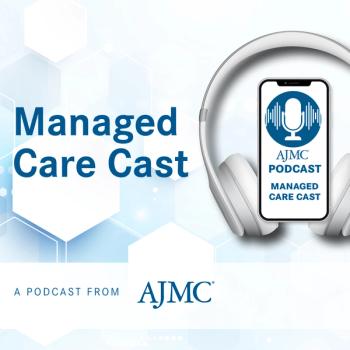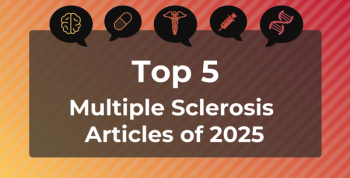
Plant-Based Diet May Improve Stress-Related Metrics in Rheumatoid Arthritis
Key Takeaways
- The plant-based lifestyle program improved stress markers in rheumatoid arthritis but not in MSOA, indicating differential effects based on condition.
- Participants engaging in stress-reducing activities like meditation experienced greater improvements in stress markers, though effects were modest and short-lived.
The lifestyle intervention included a whole-food plant-based diet, exercise, sleep, and stress management components.
A plant-based lifestyle program that previously showed benefits for joint pain and inflammation in
The 16-week PFJ program combined a whole-food, plant-based diet with physical activity, sleep hygiene, and stress management techniques. In
Evidence Linking Stress Management to Outcomes
Prior studies have shown that stress management and mindfulness-based interventions can improve psychological well-being and reduce rheumatoid arthritis symptoms like pain, anxiety, and depressive mood, even if they do not always lower disease activity scores such as DAS28.
Yoga has also been shown to positively influence HRV, cortisol levels, and other markers of autonomic function. Additional evidence suggests practices like deep breathing or electrical vagus nerve stimulation can activate the parasympathetic nervous system, reduce cytokine production, and help modulate immune activity in rheumatoid arthritis.
Modest But Measurable Stress Reductions in Rheumatoid Arthritis
Among 77 participants with rheumatoid arthritis, those who followed the PFJ program showed greater signs of reduced stress compared with those receiving usual care.1 One key finding was a significant increase in normalized high-frequency HRV (HFnorm) among those following the program, which signals stronger parasympathetic nervous system activity (between-group difference, 6.6; 95% CI, 0.5-12.6). These patients also saw a trend toward improved root square mean of successive differences, another HRV measure related to stress recovery (between-group difference, 4.3; 95% CI, –1.5 to 10.1).
Compared with usual care, the lifestyle intervention was also tied to nonsignificant reductions in heart rate (between-group difference, 3.1; 95% CI, –3.9 to 10.1), salivary cortisol (1.3; 95% CI, –0.6 to 3.1), and perceived stress (–2.0; 95% CI, –4.4 to 0.3). Measured via the Perceived Stress Scale-10 (PSS-10), subjective stress declined by 2 points more in the PFJ group than in the control.
Importantly, participants who reported spending more time on stress-reducing activities like breathing exercises or meditation experienced greater improvements in HFnorm. However, engagement with these activities was short-lived, peaking at 8 weeks and returning to baseline levels by week 16. While this was not reflected in the activity data, the authors said participants may have become more aware of stressors and used techniques that were not quantifiable for the study but still had an effect on their stress levels. According to them, this short-term increase in stress-reducing activity could have longer-term impacts worth investigating. On the other hand, they said the intervention as a whole could have contributed to stress reduction.
No Observed Effect for Osteoarthritis
In contrast with the rheumatoid arthritis group, participants with MSOA did not experience any meaningful changes in stress-related measures. This group, which had a higher baseline body mass index and older mean age than the rheumatoid arthritis cohort, showed no differences in heart rate, HRV, cortisol, or perceived stress compared with controls after the intervention.
Physical activity had a different relationship with stress between groups. Higher activity levels were tied to slightly higher stress levels in rheumatoid arthritis, with a mean of 139 minutes of activity per week (β, 0.022; P = .025), but lower levels in the MSOA group, which averaged 119 minutes a week (β, −0.025; P = .038).
“While the effects of individual lifestyle components cannot be isolated, the associations suggest that greater engagement in stress-reduction activities and physical activity were most linked to improvements in stress outcomes,” the authors said. “However, these associations should be interpreted with caution, as adherence data was self-reported, the effects were small and potentially clinically insignificant, the sample size was limited, and baseline physical activity levels were already high.”
References
- Wagenaar CA, Christiaans J, Hermans V, et al. Effect of a multidisciplinary lifestyle intervention on stress-related parameters in people with rheumatoid arthritis and osteoarthritis: secondary analysis of the "Plants for Joints" randomized controlled trial. Compr Psychoneuroendocrinol. 2025;23:100298. doi:10.1016/j.cpnec.2025.100298
- Walrabenstein W, Wagenaar CA, van de Put M, et al. A multidisciplinary lifestyle program for metabolic syndrome-associated osteoarthritis: the "Plants for Joints" randomized controlled trial. Osteoarthritis Cartilage. 2023;31(11):1491-1500. doi:10.1016/j.joca.2023.05.014
- Slagter L, Demyttenaere K, Verschueren P, De Cock D. The effect of meditation, mindfulness, and yoga in patients with rheumatoid arthritis. J Pers Med. 2022;12(11):1905. doi:10.3390/jpm12111905
Newsletter
Stay ahead of policy, cost, and value—subscribe to AJMC for expert insights at the intersection of clinical care and health economics.







































